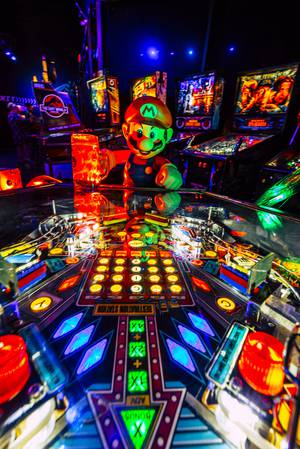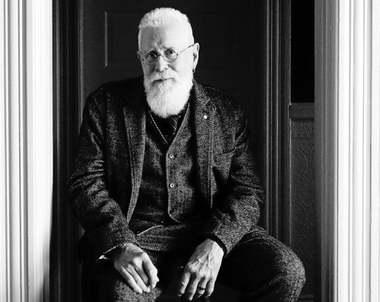The Xbox Series X and Playstation 5 are now in stores, ready to bathe Christmas 2020 in pixels. Those systems, alongside the Nintendo Switch, represent the eighth generation of video game consoles—a legacy of technological innovation whose origins might be deeper than you know. People have been bringing gaming consoles home for the holidays since 1972, when the Magnavox Odyssey was released—a scant year after the introduction of the first coin-operated arcade game, Atari founder Nolan Bushnell’s Computer Space.
Here’s a speed-run through the timeline of consoles, nearly leading up to the one you might be plugging in on Christmas morning. By necessity, it omits much, so if you want to learn more, read Van Burnham’s Supercade (MIT Press, 2003) or Jonathan Hennessey and Jack McGowan’s The Comic Book History of Video Games (Ten Speed Press, 2017).
Notable Game Consoles
Magnavox Odyssey (1972)
Created by self-taught engineer Ralph Baer, the Odyssey had no internal processor or memory, relying largely on transistors to enable gameplay. The graphics were black-and-white; there was no sound. It was so unlike modern gaming consoles that an apples-to-apples comparison is impossible. However, the Odyssey 2, released in 1978, had an 8-bit processor and 64 bytes of internal RAM, while Sony’s recently released Playstation 5 possesses a whopping 10.28 teraflops of graphics-processing power and 16 gigabytes of internal RAM. Forget apples-to-apples; that’s gecko-to-Godzilla.
Atari 2600 (1977)
The Fairchild Channel F introduced cartridge-based gaming in November 1976, but this iconic console, released a year after, took the idea and sold 30 million units’ worth of it. An entire generation was introduced to home gaming via Space Invaders, Combat, Pitfall and more. Trivia: Apple co-founder Steve Wozniak helped create one of its games, Breakout.
Nintendo Entertainment System (1985) Arriving a few years after the market for home gaming imploded—the result of market oversaturation and mediocre new games—the NES came on strong with titles like Super Mario Brothers, The Legend of Zelda, Tetris and others that still resonate today. Nearly 62 million consoles were sold worldwide; not even its successor, the 1990 Super Nintendo Entertainment System, sold quite as well, though it was a blockbuster, too.
Sega Genesis (1988) Adapted from the circuit board Sega used in its arcade games, this fast, powerful console ratcheted up the intensity of home gaming with titles like Sonic the Hedgehog, Altered Beast and Mortal Kombat. The latter game, along with CD-ROM title Night Trap, motivated Sega to create the first rating system that would allow for the sale of games with material unsuitable for kids.
Sony PlayStation (1994) Born from a failed collaboration with Nintendo, this CD-ROM-based Sony console—now known as the “PS1”—was a blockbuster, selling more than 102 million units worldwide thanks to its powerful specs and competitive pricing. The PS1 made Sony a gaming superpower overnight; its sequel, Playstation 2, would sell a mind-boggling 155 million units—making it, to date, the best-selling console of all time.
Microsoft Xbox (2001) The first gaming console built nearly to PC specs—with a Pentium III processor, an integrated Ethernet port and a built in hard disk, which was used for game saves and downloaded titles—
Microsoft’s chunky Xbox rose to prominence on the strength of the Halo series. (It’s also a favorite console of modders, who use it to run emulated games.) It announced Microsoft as a major player.
Nintendo Wii (2006) Aimed squarely at casual gamers, the Wii, with its family-friendly, party-ready titles and fun, gesture-based controllers, created a different market beyond the high-stakes gaming war waged by Microsoft and Sony. It’s been Nintendo’s third-most commercially successful system to date, behind two handhelds, the Game Boy and the Nintendo DS (which, coincidentally, is the second-highest selling unit of all time, at 154 million units).
PC GAMING
Games designed for computer play preceded the era of dedicated gaming consoles attached to televisions—Stephen Russell and a group of MIT students created Spacewar! in 1962—and PC gaming was pretty much the home standard after the Atari 2600 crashed and burned in 1983, thanks to the popularity of the dirt-cheap Commodore 64 (which, by the way, made its debut at CES 1982 here in Las Vegas). There’s just too much PC gaming history to sum up in this limited space, but it can be said that its popularity has remained high even in an age of powerful gaming consoles, thanks to thoughtful puzzle games like Cyan’s Myst (1993), broad-appeal family games like Maxis’ The Sims (2000) and massively multiplayer online role-playing games (MMORPG) like Blizzard Entertainment’s World of Warcraft (2004). Hardcore PC gamers invest heavily in their art, often building their machines from scratch.
MEANWHILE, IN ARCADES
America’s “Golden Age” of video arcades lasted from roughly 1978, when Taito’s Space Invaders debuted, through 1986, when the Nintendo Entertainment System went into wide release. In its heyday, it produced superstar titles like Atari’s Asteroids (1979), Namco’s Pac-Man (1980), Nintendo’s Donkey Kong (1981), Cinematronics’ Dragon’s Lair (1983), Sega’s OutRun (1986) and Capcom’s Street Fighter II (1991).
Early on, most arcade titles were too graphics-heavy and complex to transfer to home consoles—the Atari 2600 versions of Pac-Man and Asteroids were tragic—and some later games, like Sega’s The House of the Dead (1996) and Konami’s Dance Dance Revolution (1998), are simply more fun to play in arcades, which is why local arcades like Player1 (2797 S. Maryland Parkway #24, 725-204-1399) and Game Nest (4525 W. Spring Mountain Road #112, 725-780-4426)—along with the Pinball Hall of Fame (1610 E. Tropicana Ave., 702-597-2627), which features an array of classic video games—still draw eager players by the truckload.








